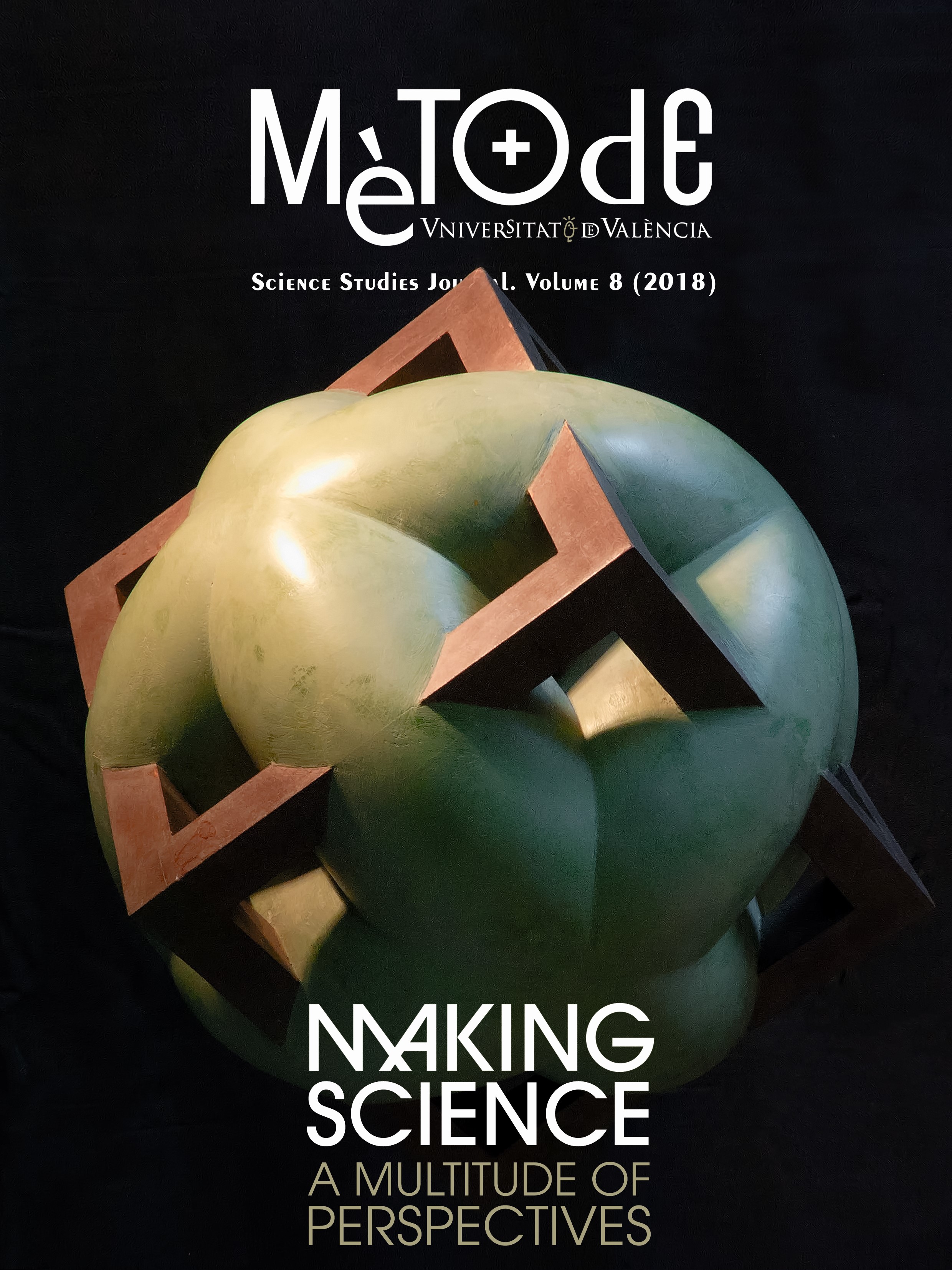Whence pseudoscience? An epidemiological approach
DOI:
https://doi.org/10.7203/metode.8.10007Keywords:
pseudoscience, epidemiology of representations, human cognition, epistemic vigilance, science mimicry Abstract
Abstract
In this paper, we develop an epidemiological approach to account for the typical features and persistent popularity of pseudoscience. An epidemiology of pseudoscience aims at explaining why some beliefs become widely distributed whereas others do not and hence seeks to identify the factors that exert a causal effect on this distribution. We pinpoint and discuss several factors that promote the dissemination of pseudoscientific beliefs. In particular, we argue that such beliefs manage to spread widely because they are intuitively appealing, manage to hitchhike on the authority of science, and successfully immunize themselves from criticism.
 Downloads
Downloads
 References
References
Ariely, D. (2009). Predictably irrational, revised and expanded edition: The hidden forces that shape our decisions. New York: Harper Collins.
Blancke, S., Boudry, M., & Pigliucci, M. (2017). Why do irrational beliefs mimic science? The cultural evolution of pseudoscience. Theoria, 83(1), 78–97. doi: 10.1111/theo.12109
Blancke, S., & De Smedt, J. (2013). Evolved to be irrational? Evolutionary and cognitive foundations of pseudosciences. In M. Pigliucci & M. Boudry (Eds.), The philosophy of pseudoscience(pp. 361–379). Chicago: The University of Chicago Press.
Blancke, S., Van Breusegem, F., De Jaeger, G., Braeckman, J., & Van Montagu, M. (2015). Fatal attraction: The intuitive appeal of GMO opposition. Trends in Plant Science, 20(7), 414–418. doi: 10.1016/j.tplants.2015.03.011
Boudry, M., Blancke, S., & Pigliucci, M. (2015). What makes weird beliefs thrive? The epidemiology of pseudoscience. Philosophical Psychology, 28(8), 1177–1198. doi: 10.1080/09515089.2014.971946
Boudry, M., & Braeckman, J. (2011). Immunizing strategies and epistemic defense mechanisms. Philosophia, 39(1), 145–161. doi: 10.1007/s11406-010-9254-9
Boudry, M., & Braeckman, J. (2012). How convenient! The epistemic rationale of self-validating belief systems. Philosophical Psychology, 25(3), 341–364. doi: 10.1080/09515089.2011.579420
Boudry, M., & Hofhuis, S. (2017). Parasites of the mind. How cultural representations can subvert human interests. PhilSci Archive. Retrieved from http://philsci-archive.pitt.edu/id/eprint/13207
Boyer, P. (2001). Religion explained. The evolutionary origins of religious thought. New York: Basic Books.
Boyer, P., & Barrett, H. C. (2005). Domain specificity and intuitive ontology. In D. M. Buss (Ed.), The handbook of evolutionary psychology(pp. 96–118). Hoboken: Wiley.
Gelman, S. A. (2004). Psychological essentialism in children. Trends in Cognitive Sciences, 8(9), 404–409. doi: 10.1016/j.tics.2004.07.001
Hansson, S. O. (2009). Cutting the Gordian knot of demarcation. International Studies in the Philosophy of Science, 23(3), 237–243. doi: 10.1080/02698590903196007
Kelemen, D. (1999). Why are rocks pointy? Children’s preference for teleological explanations of the natural world. Developmental Psychology, 35(6), 1440–1452. doi: 10.1037//0012-1649.35.6.1440
Lewens, T. (2015). Cultural evolution. Conceptual challenges. Oxford: Oxford University Press.
Mercier, H., & Sperber, D. (2011). Why do humans reason? Arguments for an argumentative theory. Behavioral and Brain Sciences, 34(2), 57–74. doi: 10.1017/s0140525x10000968
Mercier, H., & Sperber, D. (2017). The enigma of reason. Cambridge, MA: Harvard University Press.
Morin, O. (2013). How portraits turned their eyes upon us: Visual preferences and demographic change in cultural evolution. Evolution and Human Behavior, 34(3), 222–229. doi: 10.1016/j.evolhumbehav.2013.01.004
Spelke, E. S. (1990). Principles of object perception. Cognitive Science, 14(1), 29–56. doi: 10.1207/s15516709cog1401_3
Sperber, D. (1996). Explaining culture. A naturalistic approach. Oxford: Blackwell.
Sperber, D., Clement, F., Heintz, C., Mascaro, O., Mercier, H., Origgi, G., & Wilson, D. (2010). Epistemic vigilance. Mind & Language, 25(4), 359–393.
Downloads
Published
How to Cite
-
Abstract3366
-
PDF1299
Issue
Section
License
![]()
All the documents in the OJS platform are open access and property of their respective authors.
Authors publishing in the journal agree to the following terms:
- Authors keep the rights and guarantee Metode Science Studies Journal the right to be the first publication of the document, licensed under a Creative Commons Attribution-NonCommercial-NoDerivatives 4.0 International License that allows others to share the work with an acknowledgement of authorship and publication in the journal.
- Authors are allowed and encouraged to spread their work through electronic means using personal or institutional websites (institutional open archives, personal websites or professional and academic networks profiles) once the text has been published.





